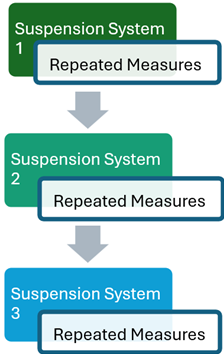Smartfit
SmartFit:
Socket-leg interface movements as a measure of dynamic prosthetic fit for transtibial amputees
SLMs in TTAs - Hylse-stump bevegelser som mål på protesepassform
Project Overview
The project investigates how movements between the prosthetic socket and the residual limb—called socket-leg interface movements (SLMs)—can be used to assess and improve prosthetic fit for transtibial amputees.
A well-fitting prosthesis is essential for comfort, mobility, and quality of life. Yet, many users experience discomfort and require frequent adjustments. This project aims to further develop objective, dynamic methods (using motion capture technology) to assess prosthetic fit.
Our Goals
- To increase understanding of dynamic prosthetic fit in transtibial prosthesis users
- To explore motion capture-based methods for measuring socket-leg interface movements during dynamic activities
- To improve the prosthetic fitting process and enhance user satisfaction
- To identify ways to reduce healthcare costs by influencing socket fabrication and suspension system selection therefore reducing the need for repeated fittings
Research Questions
1. Suspension Systems
- Does the suspension system in use (pin lock, passive vacuum, active vacuum) have an effect on the SLM?
2. Torque Resistance Capacity
- How much rotational force (torque) can the prosthesis system withstand before rotational motion occurs between the socket and the liner?
- Does this resistance depend on the suspension system used?
- Is it affected by proximal-distal loads and displacements?
3. Rotation-Inducing Activities and Socket-Leg Motion
- How do rotation-inducing activities (e.g., pivoting, turning) affect socket-leg interface movements in transtibial prosthesis users?
- Do different suspension systems influence the degree of socket-leg motion during these activities?
- Is reduced socket-leg motion associated with improved functional performance?
4. Walking Velocity and Gait
- How does walking speed (e.g., preferred vs. fast) affect socket-leg interface motion in transtibial prosthesis users?
- Do different suspension systems respond differently to changes in walking velocity?
- Is gait symmetry or stability influenced by socket-leg motion?
5. Patient-Reported Outcomes and Socket-Leg Motion
- What is the relationship between socket-leg interface motion and patient-reported outcomes such as comfort, satisfaction, and perceived functionality?
- Do users reporting higher comfort and satisfaction experience less socket-leg motion during dynamic tasks?
- Can PROMs be used to predict or validate objective measures of prosthetic fit?
Study Design

Experimental Testing

Each participant will complete the full sequence of tests with all three systems, allowing for repeated measures and comparison across conditions.
Testing Procedures
For each suspension system, participants will perform:

- Biodex Tasks: Assessing torque resistance at the socket-leg interface
- Treadmill Tasks: Evaluating socket-leg motion while walking at self-selected preferred walking speed and self-selected fastest walking speed
- Rotational Tasks: Measuring motion during turning and curved walking on level ground
These tasks are designed to capture how each suspension system influences socket-leg motion, gait performance, and user comfort. Motion is recorded using a 3D motion capture system, and outcomes are supported by gait metrics and questionnaires.
Expected Impact
- Provide clinicians with objective tools to assess prosthetic fit
- Improve prosthetic design and fitting protocols
- Enhance user comfort and mobility
- Reduce healthcare costs by minimizing socket refittings
Project Staff and Roles
Research Roles
- PhD candidate Maria Jose Lequerica, NTNU
- Main Supervisor Karin Roeleveld, NTNU
- Co Supervisor Gertjan Ettema, NTNU
Clinical Roles
- Trøndelag Ortopediske Verksted (TOV) AS is a project collaborator and therefore their representative is Mette Vestli.
- Clinically responsible prosthetist Eivind Modalsli, TOV AS
- Project Collaborator (Supporting Clinical Expert) Linn Reed Schwanborg
- Medical Supervisor (TBD)
-
Gunveig Berge
MSc, Certified Prosthetist & Orthotist -
Sindre Wold Eikevåg
PhD Candidiate, Engineer -
Gertjan Ettema
Professor -
Maria Jose Lequerica
PhD Candidate -
Eivind Heilmann Modalsli
MSc, Certified Prosthetist & Orthotist -
Linn Reed-Schwanborg
PhD candidate, Certified Prosthetist & Orthotist -
Karin Roeleveld
Professor, Movement Scientist -
Martin Steinert
Engineer -
Matthew Lawrence Wassall
PhD, Researcher
